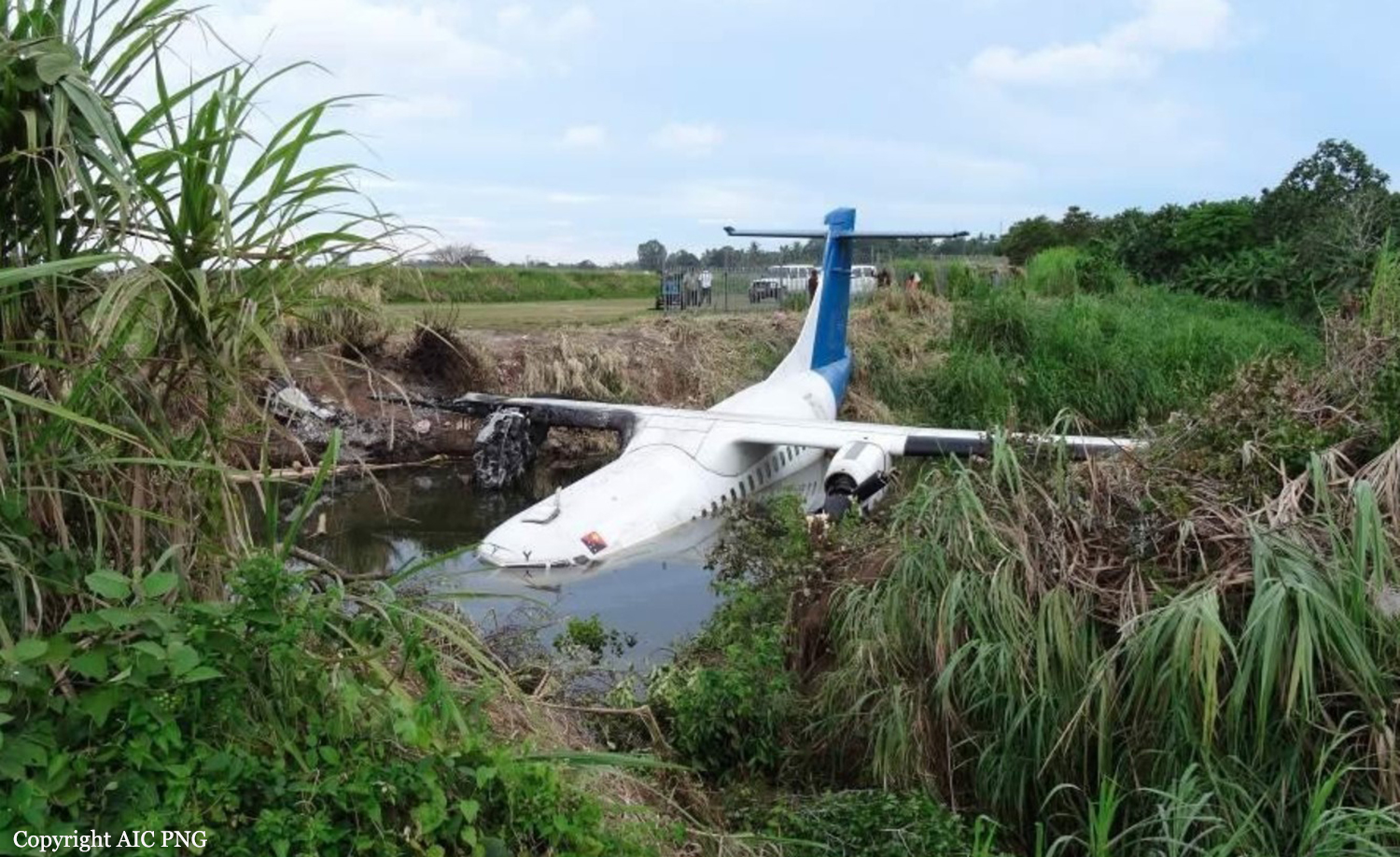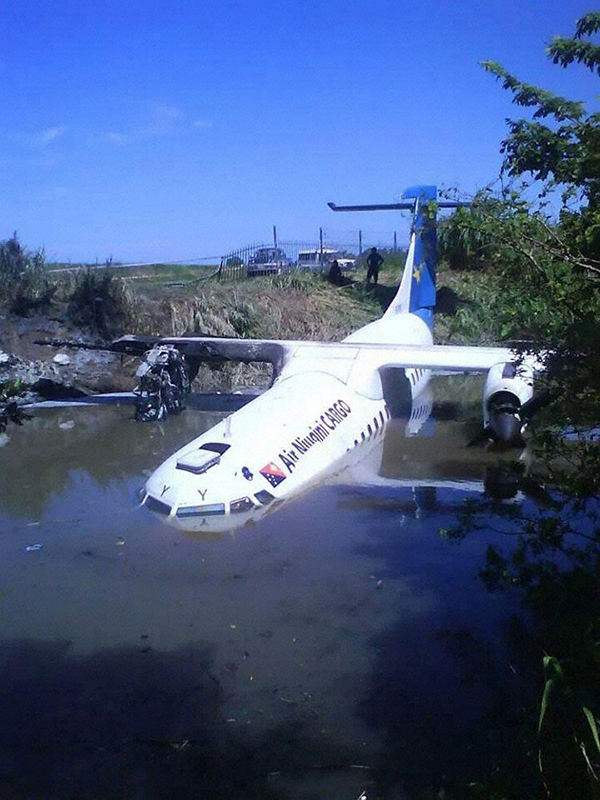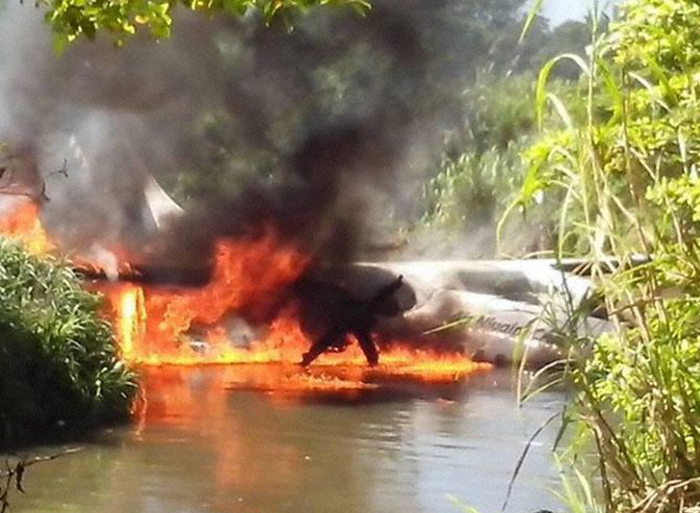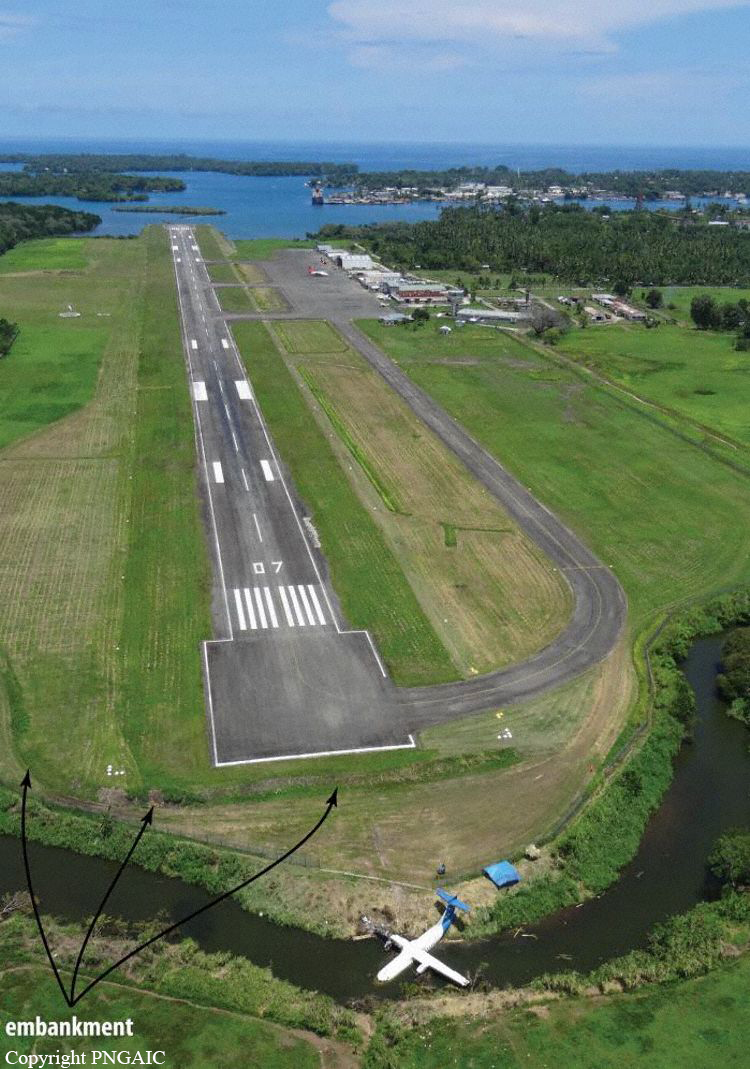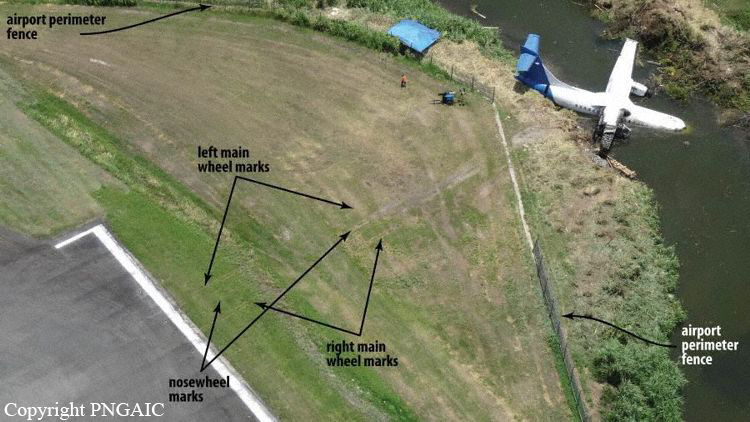Country
Crash of an ATR42-320 in Fond-du-Lac: 1 killed
Date & Time:
Dec 13, 2017 at 1812 LT
Registration:
C-GWEA
Survivors:
Yes
Schedule:
Saskatoon – Prince Albert – Fond-du-Lac – Stony Rapids
MSN:
240
YOM:
1991
Flight number:
WEW280
Crew on board:
3
Crew fatalities:
Pax on board:
22
Pax fatalities:
Other fatalities:
Total fatalities:
1
Captain / Total hours on type:
1500.00
Copilot / Total hours on type:
7930
Aircraft flight hours:
26481
Aircraft flight cycles:
32051
Circumstances:
On 13 December 2017, an Avions de Transport Régional ATR 42-320 aircraft (registration C-GWEA, serial number 240), operated by West Wind Aviation L.P. (West Wind), was scheduled for a series of instrument flight rules flights from Saskatoon through northern Saskatchewan as flight WEW282. When the flight crew and dispatcher held a briefing for the day’s flights, they became aware of forecast icing along the route of flight. Although both the flight crew and the dispatcher were aware of the forecast ground icing, the decision was made to continue with the day’s planned route to several remote airports that had insufficient de-icing facilities. The aircraft flew from Saskatoon/John G. Diefenbaker International (CYXE) to Prince Albert (Glass Field) Airport (CYPA) without difficulty, and, after a stop of about 1 hour, proceeded on toward Fond-du-Lac Airport (CZFD). On approach to Fond-du-Lac Airport, the aircraft encountered some in-flight icing, and the crew activated the aircraft’s anti-icing and de-icing systems. Although the aircraft’s ice protection systems were activated, the aircraft’s de-icing boots were not designed to shed all of the ice that can accumulate, and the anti-icing systems did not prevent ice accumulation on unprotected surfaces. As a result, some residual ice began to accumulate on the aircraft. The flight crew were aware of the ice; however, there were no handling anomalies noted during the approach. Consequently, they likely did not assess that the residual ice was severe enough to have a significant effect on aircraft performance. The crew continued the approach and landed at Fond-du-Lac Airport at 1724 Central Standard Time. According to post-accident analysis of the data from the flight data recorder, the aircraft’s drag and lift performance was degraded by 28% and 10%, respectively, shortly before landing at Fond-du-Lac Airport. This indicated that the aircraft had significant residual ice adhering to its structure upon arrival. However, this data was not available to the flight crew at the time of landing. The aircraft was on the ground at Fond-du-Lac Airport for approximately 48 minutes. The next flight was destined for Stony Rapids Airport (CYSF), Saskatchewan, with 3 crew members (2 pilots and 1 flight attendant) and 22 passengers on board. Although there was no observable precipitation or fog while the aircraft was on the ground, weather conditions were conducive to ice or frost formation. This, combined with the residual mixed ice on the aircraft, which acted as nucleation sites that allowed the formation of ice crystals, resulted in the formation of additional ice or frost on the aircraft’s critical surfaces. Once the passengers had boarded the aircraft, the first officer completed an external inspection of the aircraft. However, because the available inspection equipment was inadequate, the first officer’s ice inspection consisted only of walking around the aircraft and looking at the left wing from the top of the stairs at the left rear door, without the use of a flashlight on the dimly lit apron. Although he was unaware of the full extent of the ice and the ongoing accretion, the first officer did inform the captain that there was some ice on the aircraft. The captain did not inspect the aircraft himself, nor did he attempt to have it de-iced; rather, he and the first officer continued with departure preparations. Company departures from remote airports, such as Fond-du-Lac, with some amount of surface contamination on the aircraft’s critical surfaces had become common practice, in part due to the inadequacy of de-icing equipment or services at these locations. The past success of these adaptations resulted in this unsafe practice becoming normalized and this normalization influenced the flight crew’s decision to depart. Although the flight crew were aware of icing on the aircraft’s critical surfaces, they decided that the occurrence departure could be accomplished safely. Their decision to continue with the original plan to depart was influenced by continuation bias, as they perceived the initial and sustained cues that supported their plan as more compelling than the later cues that suggested another course of action. At 1812 Central Standard Time, in the hours of darkness, the aircraft began its take-off roll on Runway 28, and, 30 seconds later, it was airborne. As a result of the ice that remained on the aircraft following the approach and the additional ice that had accreted during the ground stop, the aircraft’s drag was increased by 58% and its lift was decreased by 25% during the takeoff. Despite this degraded performance, the aircraft initially climbed; however, immediately after liftoff, the aircraft began to roll to the left without any pilot input. This roll was as a result of asymmetric lift distribution due to uneven ice contamination on the aircraft. Following the uncommanded roll, the captain reacted as if the aircraft was an uncontaminated ATR 42, with the expectation of normal handling qualities and dynamic response characteristics; however, due to the contamination, the aircraft had diminished roll damping resulting in unexpected handling qualities and dynamic response. Although the investigation determined that the ailerons had sufficient roll control authority to counteract the asymmetric lift, due to the unexpected handling qualities and dynamic response, the roll disturbance developed into an oscillation with growing magnitude and control in the roll axis was lost. This loss of control in the roll axis, which corresponds with the known risks associated with taking off with ice contamination, ultimately led to the aircraft colliding with terrain 17 seconds after takeoff. The aircraft collided with the ground in a relatively level pitch, with a bank angle of 30° left. As a result of the sudden vertical deceleration upon contact with the ground, the aircraft suffered significant damage, which varied in severity at different locations on the aircraft due to impact angle and variability in structural design. The design standards for transport category aircraft in effect at the time the ATR 42 was certified did not specify minimum loads that a fuselage structure must be able to tolerate and remain survivable, or minimum loads for fuselage impact energy absorption. As a result, the ATR 42 was not designed with these crashworthy principles in mind. The main landing gear at the bottom of the centre fuselage section was rigid, and, on impact, did not absorb or attenuate much of the load. The impact-induced acceleration was not attenuated because the landing gear housing did not deform. This unattenuated acceleration resulted in a large inertial load from the wing, causing the wing support structure to fail and the wing to collapse into the cabin. The reduced survivable space between the floor above the main landing gear and the collapsed upper fuselage caused crushing injuries, such as major head, body, and leg trauma, to passengers in the middle-forward left section of the aircraft. Of the 3 passengers in this area, 2 experienced, serious life-changing injuries, and 1 passenger subsequently died. The collapse of part of the floor structure compromised the restraint systems, limiting the protection afforded to the aircraft occupants when they were experiencing vertical, longitudinal, and lateral forces. This resulted in serious velocity-related injuries and impeded their ability to take post-crash survival actions in a timely manner. Unaware of the danger, most passengers in this occurrence did not brace for impact. Because their torsos were unrestrained, they received injuries consistent with jackknifing and flailing, such as hitting the seat in front of them. As a result of unapproved repairs, the flight attendant seat failed on impact, resulting in injuries that impeded her ability to perform evacuation and survival actions in a timely manner. Although the TSB has previously recommended the development and use of child restraints aboard commercial aircraft, planned regulations have yet to be implemented by Transport Canada. As a result, the occurrence aircraft was not equipped with these devices, and an infant passenger who was unrestrained received flailing and crushing injuries during the accident sequence. By the time the aircraft came to a rest, all occupants had received injuries. Passengers began to call for help within minutes of the impact, using their cell phones. Numerous people from the nearby community received the messages and quickly set out to help. The passengers and crew began to evacuate, but they experienced significant difficulties as a result of the aircraft damage. It took approximately 20 minutes for the first 17 passengers to evacuate, and the remaining passengers much longer; it took as long as 3 hours to extricate 1 passenger, who required rescuer assistance. As a result of the accident, 9 passengers and 1 crew member received serious injuries, and the remaining 13 passengers and 2 crew members received minor injuries. One of the passengers who had received serious injuries died 12 days after the accident. There was no post-impact fire, and the emergency locator activated on impact.
Probable cause:
Findings as to causes and contributing factors:
These are conditions, acts or safety deficiencies that were found to have caused or contributed to this occurrence.
1. When West Wind commenced operations into Fond-du-Lac Airport (CZFD) in 2014, no effective risk controls were in place to mitigate the potential hazard of ground icing at CZFD.
2. Although both the flight crew and the dispatcher were aware of the forecast ground icing, the decision was made to continue with the day’s planned route to several remote airports that had insufficient de-icing facilities.
3. Although the aircraft’s ice-protection systems were activated on the approach to CZFD, the aircraft’s de-icing boots were not designed to shed all of the ice that can accumulate, and the anti-icing systems did not prevent ice accumulation on unprotected surfaces. As a result, some residual ice began to accumulate on the aircraft.
4. Although the flight crew were aware of the ice, there were no handling anomalies noted on the approach. Consequently, the crew likely did not assess that the residual ice was severe enough to have a significant effect on aircraft performance. Subsequently, without any further discussion about the icing, the crew continued the approach and landed at CZFD.
5. Weather conditions on the ground were conducive to ice or frost formation, and this, combined with the nucleation sites provided by the residual mixed ice on the aircraft, resulted in the formation of additional ice or frost on the aircraft’s critical surfaces.
6. Because the available inspection equipment was inadequate, the first officer’s ice inspection consisted only of walking around the aircraft on a dimly lit apron, without a flashlight, and looking at the left wing from the top of the stairs at the left rear entry door (L2). As a result, the full extent of the residual ice and ongoing accretion was unknown to the flight crew.
7. Departing from remote airports, such as CZFD, with some amount of surface contamination on the aircraft’s critical surfaces, had become common practice, in part due to the inadequacy of de-icing equipment or services at these locations. The past success of these adaptations resulted in the unsafe practice becoming normalized and this normalization influenced the flight crew’s decision to depart.
8. Although the flight crew were aware of icing on the aircraft’s critical surfaces, they decided that the occurrence departure could be accomplished safely. Their decision to continue with the original plan to depart was influenced by continuation bias, as they perceived the initial and sustained cues that supported their plan as more compelling than the later cues that suggested another course of action.
9. As a result of the ice that remained on the aircraft following the approach and the additional ice that had accreted during the ground stop, the aircraft’s drag was
increased by 58% and its lift was decreased by 25% during the takeoff.
10. During the takeoff, despite the degraded performance, the aircraft initially climbed; however, immediately after lift off, the aircraft began to roll to the left without any pilot input. This roll was as a result of asymmetric lift distribution due to uneven ice contamination on the aircraft.
11. Following the uncommanded roll, the captain reacted as if the aircraft was an uncontaminated ATR 42, with the expectation of normal handling qualities and dynamic response characteristics; however, due to the contamination, the aircraft had diminished roll damping resulting in unexpected handling qualities and dynamic response.
12. Although the investigation determined the ailerons had sufficient roll control authority to counteract the asymmetric lift, due to the unexpected handling qualities and dynamic response, the roll disturbance developed into an oscillation with growing magnitude and control in the roll axis was lost.
13. This loss of control in the roll axis, which corresponds with the known risks associated with taking off with ice contamination, ultimately led to the aircraft colliding with terrain.
14. The aircraft collided with the ground in relatively level pitch, with a bank angle of 30° left. As a result of the sudden vertical deceleration upon contact with the ground, the aircraft suffered significant damage, which varied in severity at different locations on the aircraft because of the impact angle and the variability in structural design.
15. The design standards for transport category aircraft in effect at the time the ATR 42 was certified did not specify minimum loads that a fuselage structure must be able to tolerate and remain survivable, or minimum loads for fuselage impact energy absorption. As a result, the ATR 42 was not designed with these crashworthy principles in mind.
16. On impact, the induced acceleration was not attenuated because the landing gear housing did not deform. This unattenuated acceleration resulted in a large inertial load from the wing, causing the wing support structure to fail and the wing to collapse into the cabin.
17. The reduced survivable space between the floor above the main landing gear and the collapsed upper fuselage caused crushing injuries, such as major head, body, and leg trauma, to passengers in the middle-forward left section of the aircraft. Of the 3 passengers in this area, 2 experienced serious life-changing injuries, and 1 passenger died.
18. The collapse of part of the floor structure compromised the restraint systems, limiting the protection afforded to the occupants when they were experiencing vertical, longitudinal, and lateral forces. This resulted in serious velocity-related injuries and impeded their ability to take post-impact survival actions in a timely manner.
19. Most passengers in this occurrence did not brace before impact. Because their torsos were unrestrained, they received injuries consistent with jackknifing and flailing, such as hitting the seat in front of them.
20. Given that regulations requiring the use of child-restraint systems have yet to be implemented, the aircraft was not equipped with these devices. As a result, the infant passenger was unrestrained and received flail and crushing injuries. 21. As a result of unapproved repairs, the flight attendant seat failed on impact, resulting in injuries that impeded her ability to perform evacuation and survival actions in a timely manner.
These are conditions, acts or safety deficiencies that were found to have caused or contributed to this occurrence.
1. When West Wind commenced operations into Fond-du-Lac Airport (CZFD) in 2014, no effective risk controls were in place to mitigate the potential hazard of ground icing at CZFD.
2. Although both the flight crew and the dispatcher were aware of the forecast ground icing, the decision was made to continue with the day’s planned route to several remote airports that had insufficient de-icing facilities.
3. Although the aircraft’s ice-protection systems were activated on the approach to CZFD, the aircraft’s de-icing boots were not designed to shed all of the ice that can accumulate, and the anti-icing systems did not prevent ice accumulation on unprotected surfaces. As a result, some residual ice began to accumulate on the aircraft.
4. Although the flight crew were aware of the ice, there were no handling anomalies noted on the approach. Consequently, the crew likely did not assess that the residual ice was severe enough to have a significant effect on aircraft performance. Subsequently, without any further discussion about the icing, the crew continued the approach and landed at CZFD.
5. Weather conditions on the ground were conducive to ice or frost formation, and this, combined with the nucleation sites provided by the residual mixed ice on the aircraft, resulted in the formation of additional ice or frost on the aircraft’s critical surfaces.
6. Because the available inspection equipment was inadequate, the first officer’s ice inspection consisted only of walking around the aircraft on a dimly lit apron, without a flashlight, and looking at the left wing from the top of the stairs at the left rear entry door (L2). As a result, the full extent of the residual ice and ongoing accretion was unknown to the flight crew.
7. Departing from remote airports, such as CZFD, with some amount of surface contamination on the aircraft’s critical surfaces, had become common practice, in part due to the inadequacy of de-icing equipment or services at these locations. The past success of these adaptations resulted in the unsafe practice becoming normalized and this normalization influenced the flight crew’s decision to depart.
8. Although the flight crew were aware of icing on the aircraft’s critical surfaces, they decided that the occurrence departure could be accomplished safely. Their decision to continue with the original plan to depart was influenced by continuation bias, as they perceived the initial and sustained cues that supported their plan as more compelling than the later cues that suggested another course of action.
9. As a result of the ice that remained on the aircraft following the approach and the additional ice that had accreted during the ground stop, the aircraft’s drag was
increased by 58% and its lift was decreased by 25% during the takeoff.
10. During the takeoff, despite the degraded performance, the aircraft initially climbed; however, immediately after lift off, the aircraft began to roll to the left without any pilot input. This roll was as a result of asymmetric lift distribution due to uneven ice contamination on the aircraft.
11. Following the uncommanded roll, the captain reacted as if the aircraft was an uncontaminated ATR 42, with the expectation of normal handling qualities and dynamic response characteristics; however, due to the contamination, the aircraft had diminished roll damping resulting in unexpected handling qualities and dynamic response.
12. Although the investigation determined the ailerons had sufficient roll control authority to counteract the asymmetric lift, due to the unexpected handling qualities and dynamic response, the roll disturbance developed into an oscillation with growing magnitude and control in the roll axis was lost.
13. This loss of control in the roll axis, which corresponds with the known risks associated with taking off with ice contamination, ultimately led to the aircraft colliding with terrain.
14. The aircraft collided with the ground in relatively level pitch, with a bank angle of 30° left. As a result of the sudden vertical deceleration upon contact with the ground, the aircraft suffered significant damage, which varied in severity at different locations on the aircraft because of the impact angle and the variability in structural design.
15. The design standards for transport category aircraft in effect at the time the ATR 42 was certified did not specify minimum loads that a fuselage structure must be able to tolerate and remain survivable, or minimum loads for fuselage impact energy absorption. As a result, the ATR 42 was not designed with these crashworthy principles in mind.
16. On impact, the induced acceleration was not attenuated because the landing gear housing did not deform. This unattenuated acceleration resulted in a large inertial load from the wing, causing the wing support structure to fail and the wing to collapse into the cabin.
17. The reduced survivable space between the floor above the main landing gear and the collapsed upper fuselage caused crushing injuries, such as major head, body, and leg trauma, to passengers in the middle-forward left section of the aircraft. Of the 3 passengers in this area, 2 experienced serious life-changing injuries, and 1 passenger died.
18. The collapse of part of the floor structure compromised the restraint systems, limiting the protection afforded to the occupants when they were experiencing vertical, longitudinal, and lateral forces. This resulted in serious velocity-related injuries and impeded their ability to take post-impact survival actions in a timely manner.
19. Most passengers in this occurrence did not brace before impact. Because their torsos were unrestrained, they received injuries consistent with jackknifing and flailing, such as hitting the seat in front of them.
20. Given that regulations requiring the use of child-restraint systems have yet to be implemented, the aircraft was not equipped with these devices. As a result, the infant passenger was unrestrained and received flail and crushing injuries. 21. As a result of unapproved repairs, the flight attendant seat failed on impact, resulting in injuries that impeded her ability to perform evacuation and survival actions in a timely manner.
Final Report:
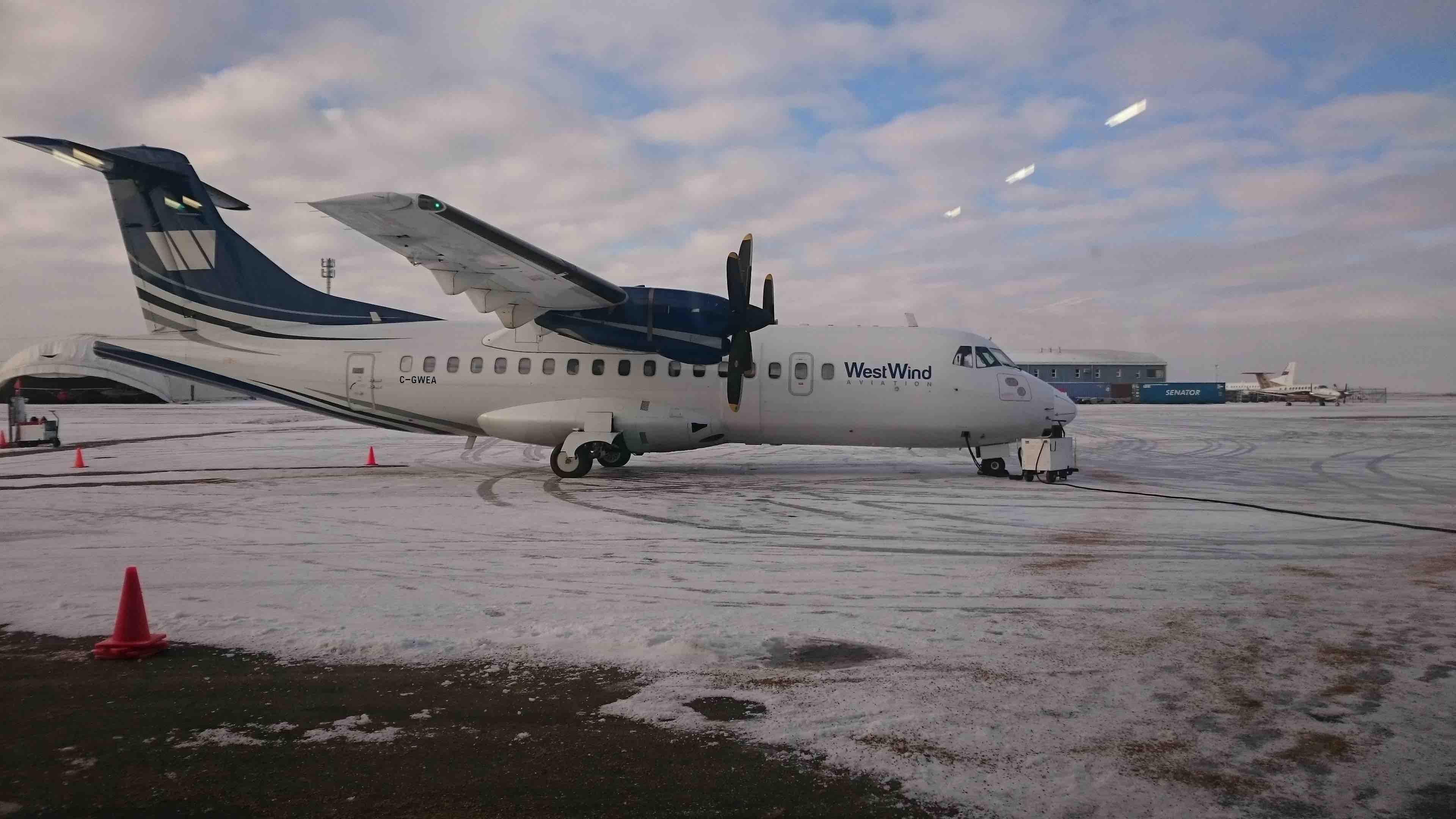
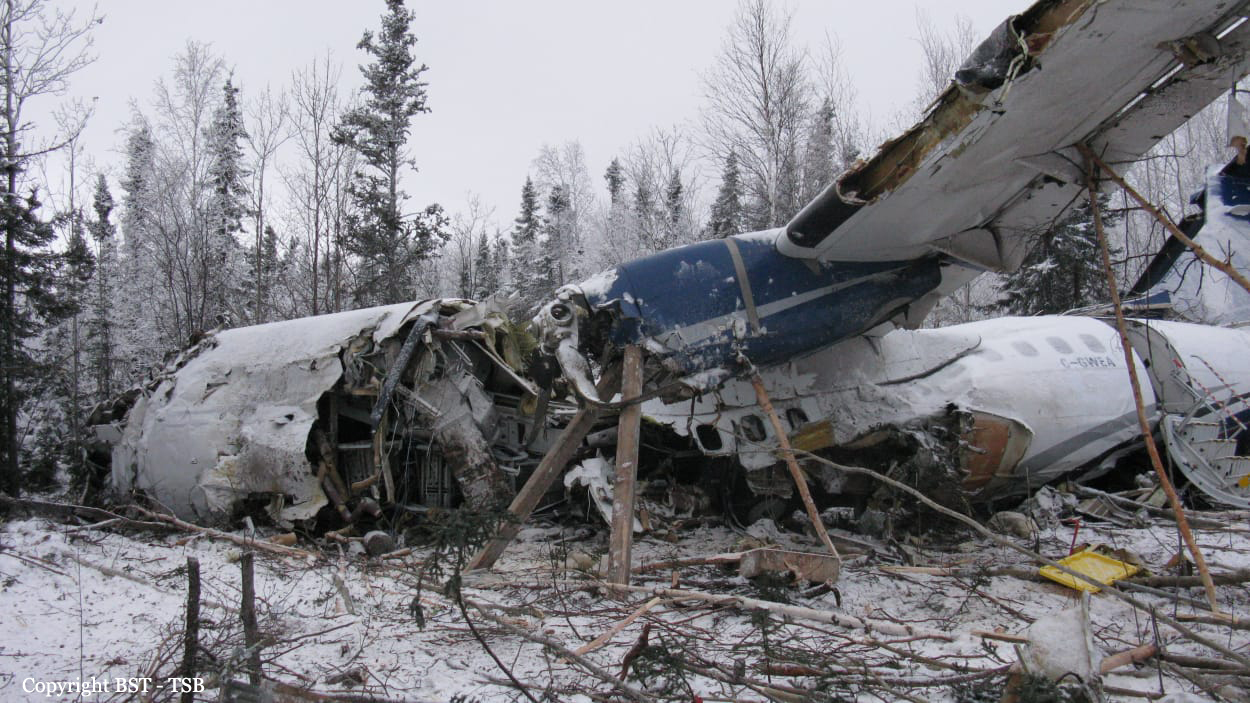
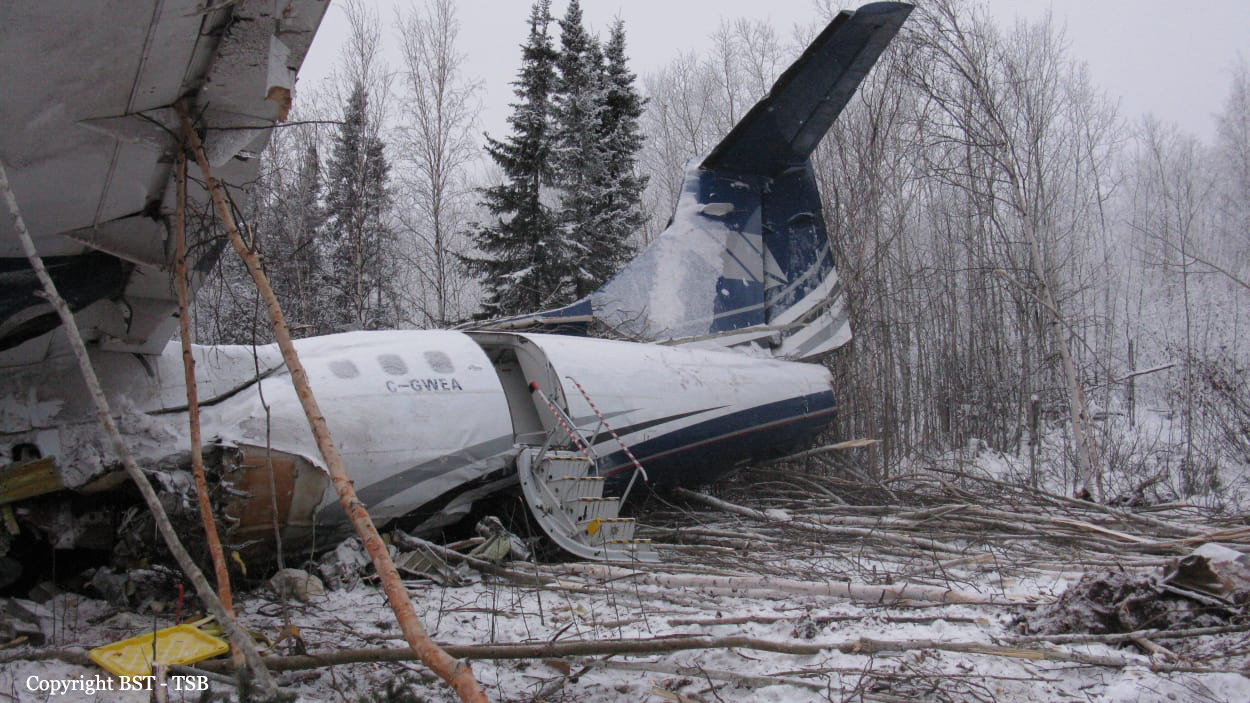
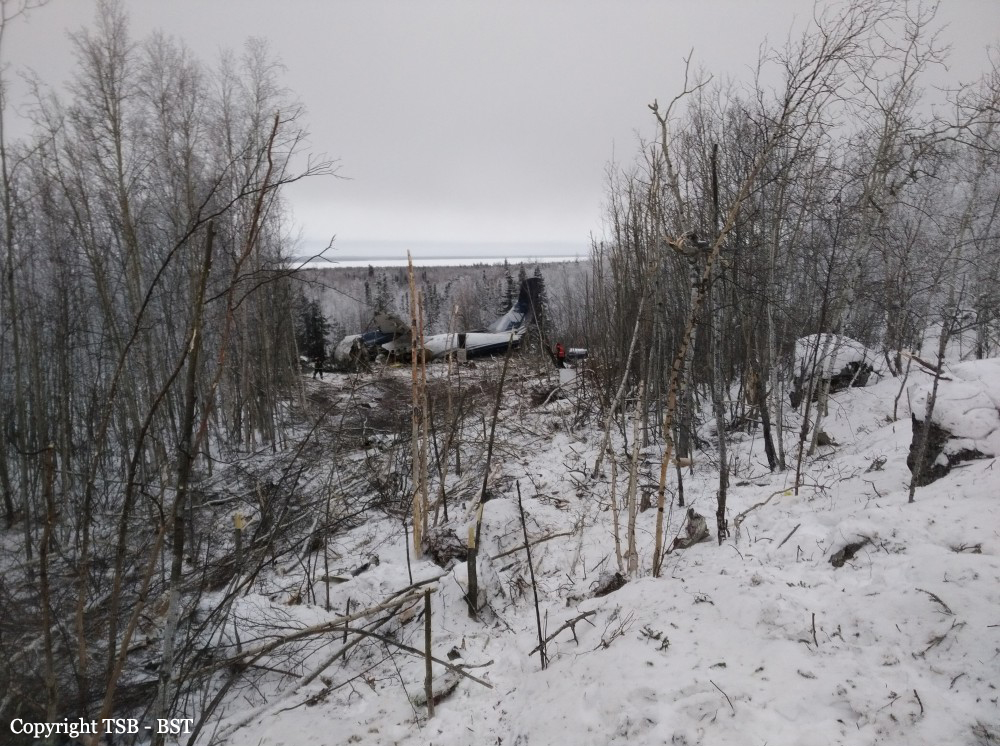
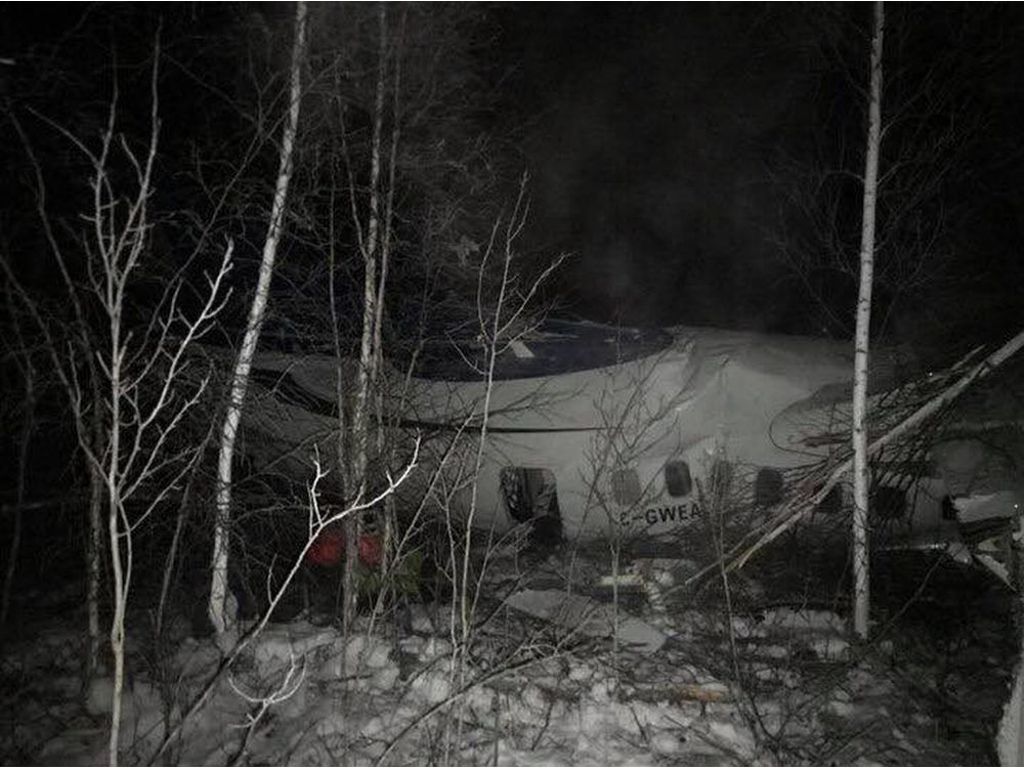
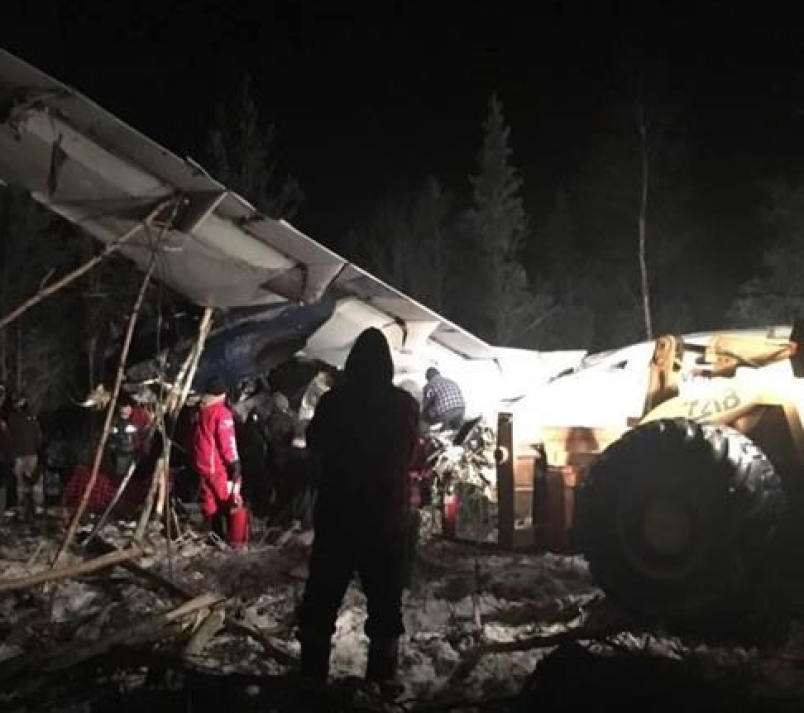
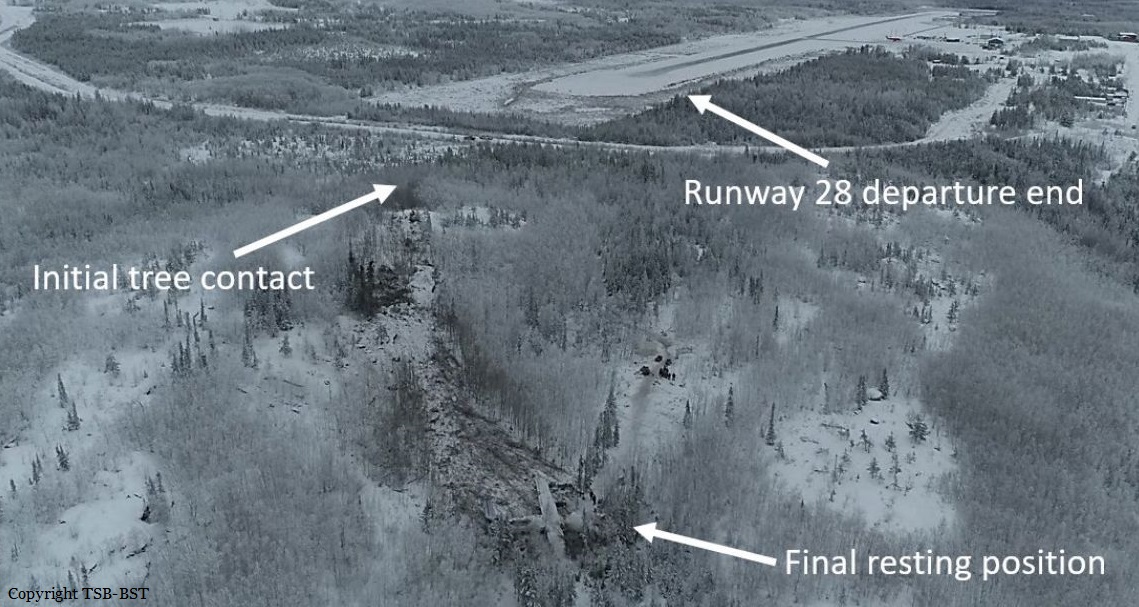
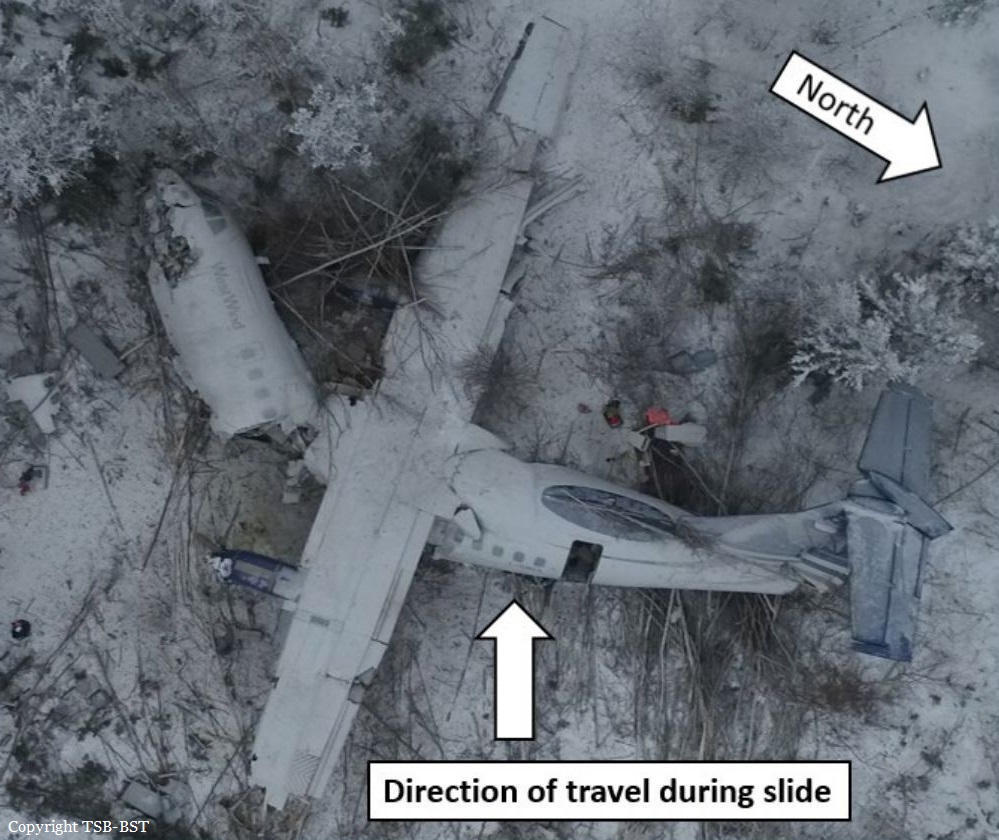
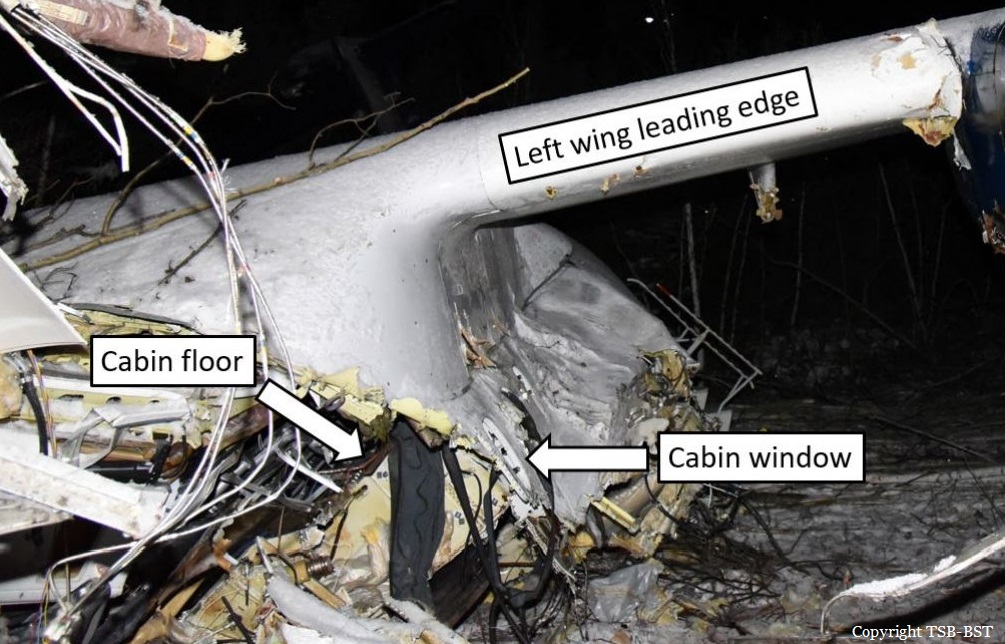
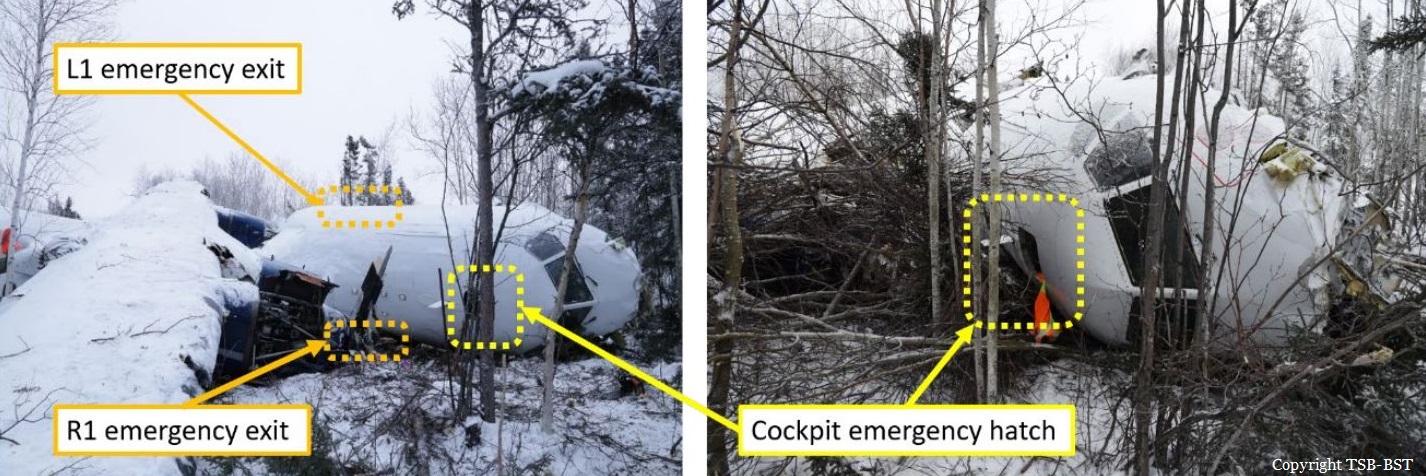

Crash of an ATR42-300 near Oksibil: 54 killed
Date & Time:
Aug 16, 2015 at 1455 LT
Registration:
PK-YRN
Survivors:
No
Schedule:
Jayapura - Oksibil
MSN:
102
YOM:
1988
Flight number:
TGN267
Crew on board:
4
Crew fatalities:
Pax on board:
50
Pax fatalities:
Other fatalities:
Total fatalities:
54
Captain / Total hours on type:
7340.00
Copilot / Total hours on type:
2640
Aircraft flight hours:
50133
Aircraft flight cycles:
55663
Circumstances:
An ATR 42-300 aircraft registered PK-YRN was being operated by PT Trigana Air Service on 16 August 2015 as scheduled passenger flight with flight number IL267 from Sentani to Oksibil. On board of this flight were 54 persons. This flight was the fifth flight of the day and the second flight from Sentani to Oksibil. The aircraft departed Sentani at 0522 UTC and estimated time of arrival Oksibil was at 0604 UTC. The Second in Command (SIC) acted as Pilot Flying while the Pilot in Command (PIC) acted as Pilot Monitoring. The weather at Oksibil reported that the cloud was broken (more than half area of the sky covered by cloud) and the cloud base was 8,000 feet (4,000 feet above airport elevation) and the visibility was 4 up to 5 km. The area of final approach path was covered by clouds. The flight cruising at 11,500 feet and at 0555 UTC, the pilot made first contact with Oksibil Aerodrome Flight Information Services (AFIS) officer, reported on descent at position Abmisibil and intended to direct left base leg runway 11. At 0600 UTC, Oksibil AFIS officer expected the aircraft would have been on final but the pilot had not reported, the AFIS officer contacted the pilot but did not reply. The AFIS officer informed Trigana in Sentani that they had lost contact with IL267. The aircraft wreckage was found on a ridge of Tanggo Mountain, Okbape District, Oksibil at approximately 8,300 feet AMSL at coordinates of 04°49’17.34” S, 140°29’51.18” E, approximately 10 NM from Oksibil Aerodrome on bearing of 306°. All occupants were fatally injured and the aircraft was destroyed by impact force and post impact fire. The Flight Data Recorder (FDR) and Cockpit Voice Recorder were recovered and transported to KNKT recorder facility. The recovery of FDR data was unsuccessful while the recovery of CVR data successfully retrieved accident flight data. The CVR did not record any crew briefing, checklist reading not EGPWS warning prior to impact. The CVR also did not record EGPWS altitude call out on two previous flights. The investigation concluded that the EGPWS was probably not functioning.
Probable cause:
The following findings were identified:
1. The aircraft had valid Certificate of Airworthiness and was operated within the weight and balance envelope.
2. All crew had valid licenses and medical certificates.
3. The flight plan form was filed with intention to fly under Instrument Flight Rule (IFR), at flight level 155, with route from Sentani to MELAM via airways W66 then to Oksibil. The MORA of W66 between Sentani to MELAM was 18,500 feet.
4. The flight was the 5th flight of the day for the crew with the same aircraft and the second flight on the same route of Sentani to Oksibil.
5. The CVR data revealed that the previous flight from Sentani to Oksibil the flight cruised at altitude of 11,500 feet and the approach was conducted by direct to left base runway 11.
6. The CVR data also revealed that on the accident flight, the flight cruised at altitude 11,500 feet and intended to direct left base leg runway 11 which was deviate from the operator visual guidance approach that described the procedure to fly overhead the airport prior to approach to runway 11.
7. The witness stated that most of the time, the flight crew deviated from the operator visual approach guidance. The deviation did not identify by the aircraft operator.
8. The downloading process to retrieve data from the FDR was unsuccessful due to the damage of the FDR unit that most likely did not record data during the accident flight. The repetition problems of the FDR unit showed that the aircraft operator surveillance to the repair station was not effective.
9. The CVR did not record any crew briefing, checklist reading and EGPWS altitude callout prior to land on two previous flights nor the EGPWS caution and warning prior to impact.
10. The spectrum analysis of the CVR determined that both engines were operating prior to the impact.
11. Several pilots, had behavior of pulling the EGPWS CB to eliminate the nuisance of EGPWS warning. The pilots stated that the reason for pulling the EGPWS CB was due to the pilots considered this warning activation was not appropriate for the flight conditions. The correction to this behavior was not performed prior to the accident.
12. The investigation could not determine the actual EGPWS CB position during the accident flight.
13. The installation of EGPWS by the aircraft operator was not conducted according to the Service Bulletin issued by the aircraft manufacturer.
14. The terrain data base installed in the EGPWS of PK-YRN was the version MK_VIII_Worldwide_Ver_471 that was released in 2014. The Oksibil Airport was not included in the high-resolution update in this version of terrain database.
15. The information for Oksibil published in AIP volume IV (Aerodrome for Light Aircraft/ALA) did not include approach guidance. The operator issued visual guidance of circling approach runway 11 for internal use.
16. The visual approach guidance chart stated that the minimum safe altitude was 8,000 feet while the aircraft impacted with terrain at approximately 8,300 feet. This indicated an incorrect information in the chart. The investigation considered that the pattern on the approach guidance chart was not easy to fly, as many altitudes and heading changes.
17. Several maintenance records such as component status installed on the aircraft and installation of EGPWS was not well documented. This indicated that the maintenance management was not well performed.
18. The investigation could not find any regulation that describes the pilot training requirement for any addition or modification of aircraft system which affect to the aircraft operation.
19. There was no information related to the status of ZX NDB published on NOTAM prior to the accident.
20. Several safety issues indicated that the organization oversight of the aircraft operator by the regulator was not well implemented.
Contributing Factors:
1. The deviation from the visual approach guidance in visual flight rules without considering the weather and terrain condition, with no or limited visual reference to the terrain resulted in the aircraft flew to terrain.
2. The absence of EGPWS warning to alert the crew of the immediate hazardous situation led to the crew did not aware of the situation.
1. The aircraft had valid Certificate of Airworthiness and was operated within the weight and balance envelope.
2. All crew had valid licenses and medical certificates.
3. The flight plan form was filed with intention to fly under Instrument Flight Rule (IFR), at flight level 155, with route from Sentani to MELAM via airways W66 then to Oksibil. The MORA of W66 between Sentani to MELAM was 18,500 feet.
4. The flight was the 5th flight of the day for the crew with the same aircraft and the second flight on the same route of Sentani to Oksibil.
5. The CVR data revealed that the previous flight from Sentani to Oksibil the flight cruised at altitude of 11,500 feet and the approach was conducted by direct to left base runway 11.
6. The CVR data also revealed that on the accident flight, the flight cruised at altitude 11,500 feet and intended to direct left base leg runway 11 which was deviate from the operator visual guidance approach that described the procedure to fly overhead the airport prior to approach to runway 11.
7. The witness stated that most of the time, the flight crew deviated from the operator visual approach guidance. The deviation did not identify by the aircraft operator.
8. The downloading process to retrieve data from the FDR was unsuccessful due to the damage of the FDR unit that most likely did not record data during the accident flight. The repetition problems of the FDR unit showed that the aircraft operator surveillance to the repair station was not effective.
9. The CVR did not record any crew briefing, checklist reading and EGPWS altitude callout prior to land on two previous flights nor the EGPWS caution and warning prior to impact.
10. The spectrum analysis of the CVR determined that both engines were operating prior to the impact.
11. Several pilots, had behavior of pulling the EGPWS CB to eliminate the nuisance of EGPWS warning. The pilots stated that the reason for pulling the EGPWS CB was due to the pilots considered this warning activation was not appropriate for the flight conditions. The correction to this behavior was not performed prior to the accident.
12. The investigation could not determine the actual EGPWS CB position during the accident flight.
13. The installation of EGPWS by the aircraft operator was not conducted according to the Service Bulletin issued by the aircraft manufacturer.
14. The terrain data base installed in the EGPWS of PK-YRN was the version MK_VIII_Worldwide_Ver_471 that was released in 2014. The Oksibil Airport was not included in the high-resolution update in this version of terrain database.
15. The information for Oksibil published in AIP volume IV (Aerodrome for Light Aircraft/ALA) did not include approach guidance. The operator issued visual guidance of circling approach runway 11 for internal use.
16. The visual approach guidance chart stated that the minimum safe altitude was 8,000 feet while the aircraft impacted with terrain at approximately 8,300 feet. This indicated an incorrect information in the chart. The investigation considered that the pattern on the approach guidance chart was not easy to fly, as many altitudes and heading changes.
17. Several maintenance records such as component status installed on the aircraft and installation of EGPWS was not well documented. This indicated that the maintenance management was not well performed.
18. The investigation could not find any regulation that describes the pilot training requirement for any addition or modification of aircraft system which affect to the aircraft operation.
19. There was no information related to the status of ZX NDB published on NOTAM prior to the accident.
20. Several safety issues indicated that the organization oversight of the aircraft operator by the regulator was not well implemented.
Contributing Factors:
1. The deviation from the visual approach guidance in visual flight rules without considering the weather and terrain condition, with no or limited visual reference to the terrain resulted in the aircraft flew to terrain.
2. The absence of EGPWS warning to alert the crew of the immediate hazardous situation led to the crew did not aware of the situation.
Final Report:
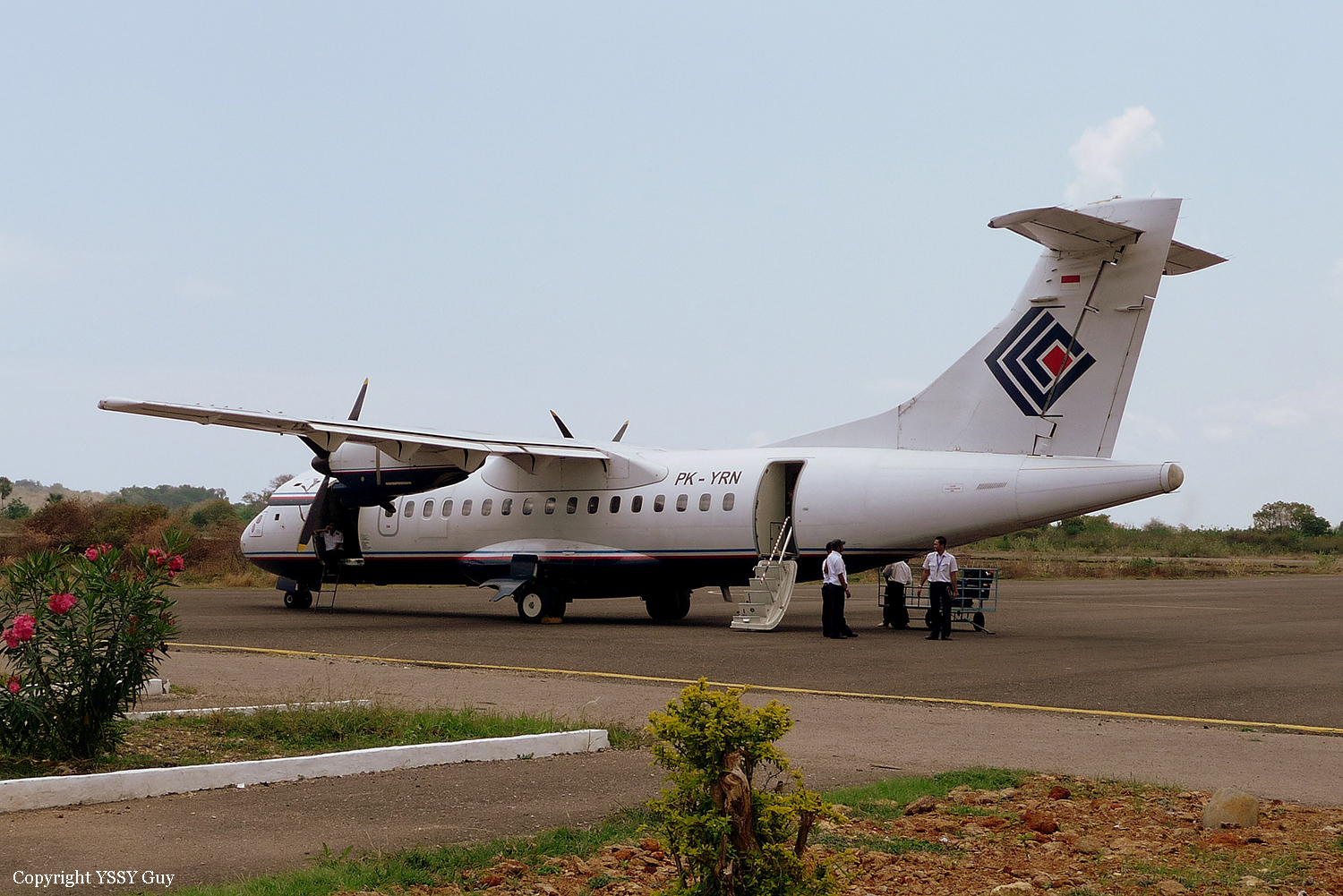
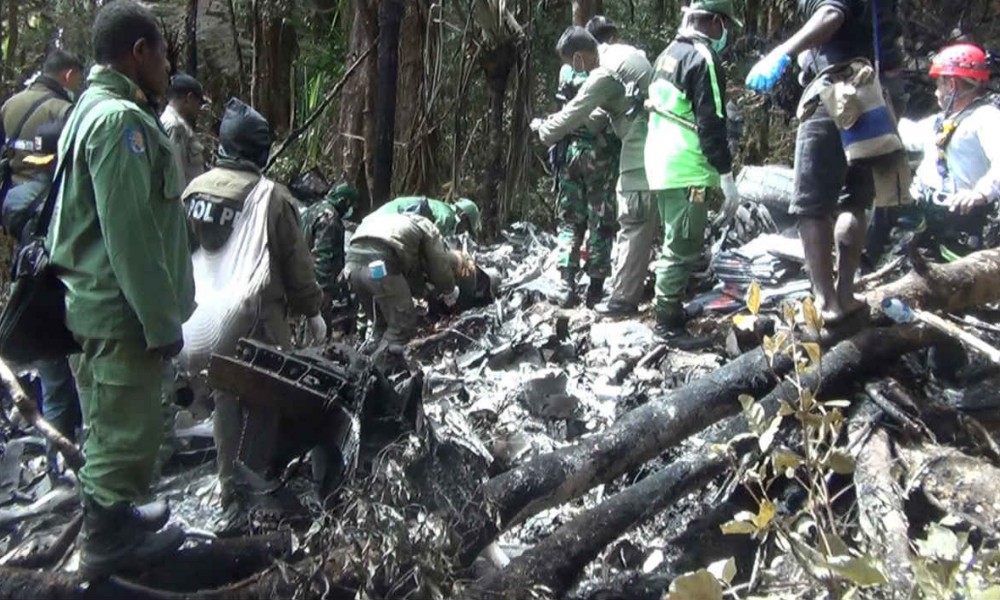
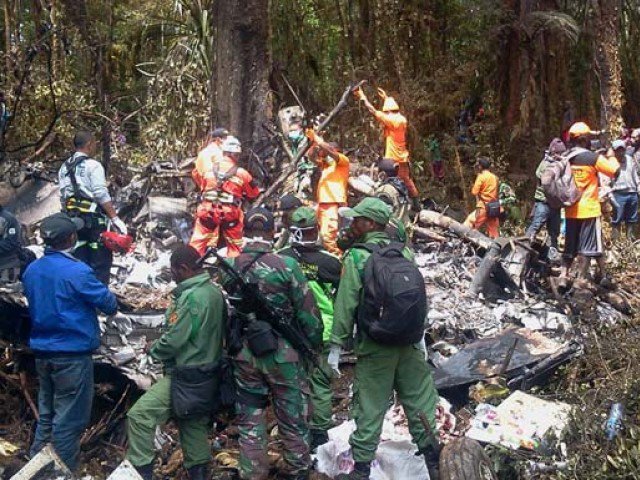
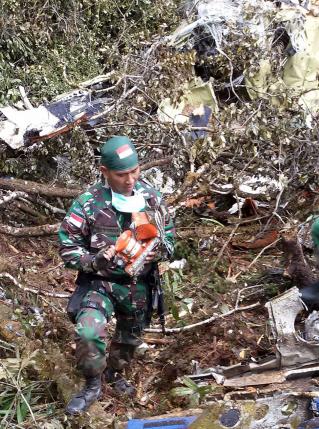
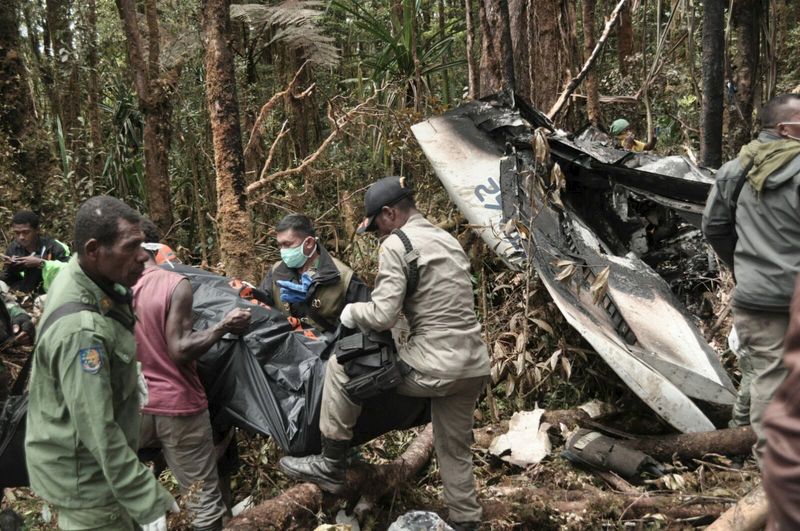
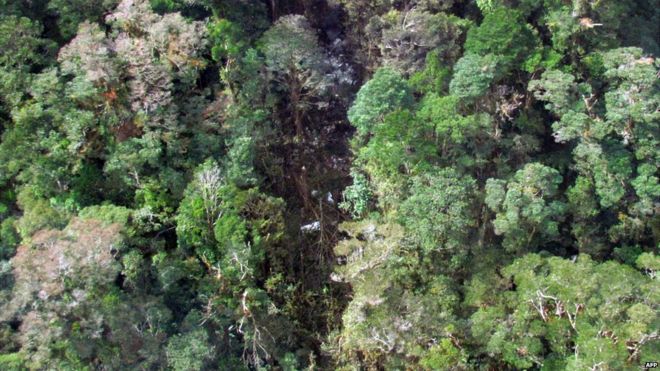
Crash of an ATR42-300 in Churchill
Date & Time:
Mar 9, 2014 at 1015 LT
Registration:
C-FJYV
Survivors:
Yes
Schedule:
Thompson – Churchill
MSN:
216
YOM:
1991
Crew on board:
3
Crew fatalities:
Pax on board:
2
Pax fatalities:
Other fatalities:
Total fatalities:
0
Circumstances:
Following an uneventful flight from Thompson, the crew completed the approach and landing at Churchill Airport. After touchdown, the crew started the braking procedure and was vacating the runway when the right main gear collapsed. This caused the right propeller and the right wing to struck the ground. The aircraft was stopped and all five occupants evacuated safely. The aircraft was damaged beyond repair.
Probable cause:
Failure of the right main gear for unknown reasons.
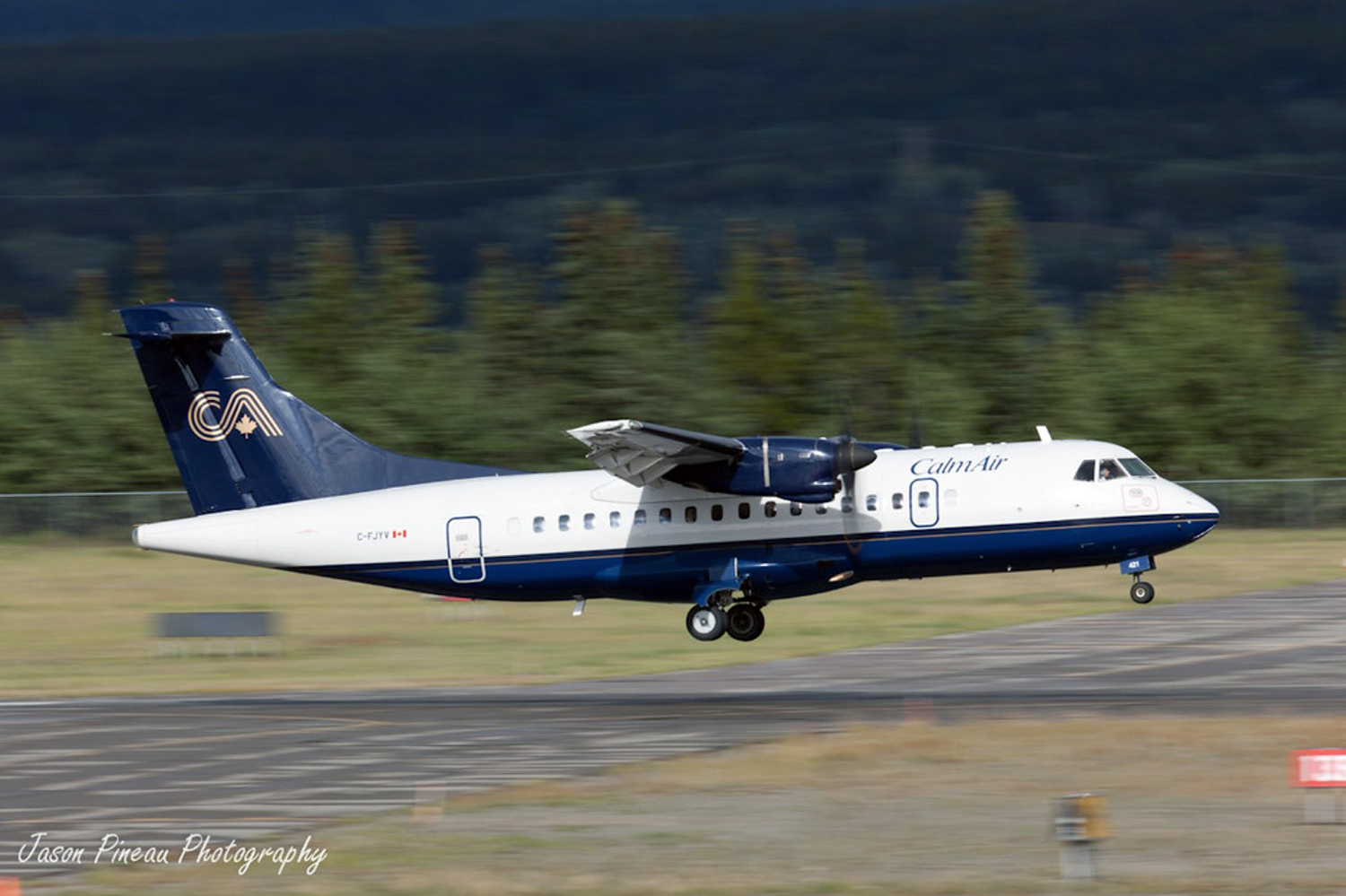
Crash of an ATR42-320F in Madang
Date & Time:
Oct 19, 2013 at 0915 LT
Registration:
P2-PXY
Survivors:
Yes
Schedule:
Madang – Tabubil – Kiunga
MSN:
87
YOM:
1988
Flight number:
PX2900
Crew on board:
3
Crew fatalities:
Pax on board:
0
Pax fatalities:
Other fatalities:
Total fatalities:
0
Captain / Total hours on type:
3433.00
Copilot / Total hours on type:
2420
Aircraft flight hours:
24375
Circumstances:
On 19 October 2013, an Avions de Transport Régional ATR42-320 freighter, registered P2-PXY (PXY) and operated by Air Niugini, was scheduled to fly from Madang to Tabubil, Western Province, as flight PX2900 carrying a load tobacco for a client company. There were three persons on board; the pilot in command (PIC), a copilot, and a PNG experienced DHC-8 captain whose function was to provide guidance during the approach into Tabubil. The PIC was the handling pilot and the copilot was the support monitoring pilot. The flight crew taxied to the threshold end of runway 25 intending to use the full length of the runway. The take-off roll was normal until the PIC tried to rotate at VR (speed for rotation, which the flight crew had calculated to be 102 knots). He subsequently reported that the controls felt very heavy in pitch and he could not pull the control column back in the normal manner. Flight data recorder (FDR) information indicated that approximately 2 sec later the PIC aborted the takeoff and selected full reverse thrust. He reported later that he had applied full braking. It was not possible to stop the aircraft before the end of the runway and it continued over the embankment at the end of the runway and the right wing struck the perimeter fence. The aircraft was substantially damaged during the accident by the impact, the post-impact fire and partial immersion in salt water. The right outboard wing section was completely burned, and the extensively damaged and burnt right engine fell off the wing into the water. Both propellers were torn from the engine shafts and destroyed by the impact forces.
Probable cause:
The following findings were identified:
- The investigation found that Air Niugini’s lack of robust loading procedures and supervision for the ATR 42/72 aircraft, and the inaccurate weights provided by the consignor/client company likely contributed to the overload.
- The mass and the centre of gravity of the aircraft were not within the prescribed limits.
- The aircraft total load exceeded the maximum permissible load and the load limit in the forward cargo zone ‘A’ exceeded the zone ‘A’ structural limit.
- There was no evidence of any defect or malfunction in the aircraft that could have contributed to the accident.
- The investigation found that Air Niugini’s lack of robust loading procedures and supervision for the ATR 42/72 aircraft, and the inaccurate weights provided by the consignor/client company likely contributed to the overload.
- The mass and the centre of gravity of the aircraft were not within the prescribed limits.
- The aircraft total load exceeded the maximum permissible load and the load limit in the forward cargo zone ‘A’ exceeded the zone ‘A’ structural limit.
- There was no evidence of any defect or malfunction in the aircraft that could have contributed to the accident.
Final Report:
